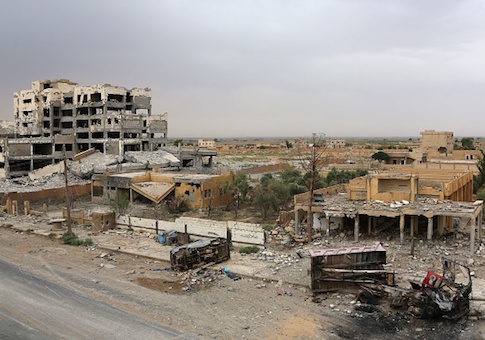U.S.-backed forces fighting in Syria have transitioned military operations from the newly liberated city of Raqqa to a series of Euphrates River Valley towns, where Islamic State militants are expected to mount their last stand in the war-torn country, a Pentagon official confirmed Monday.
Kurdish and Arab troops fighting under the umbrella of the Syrian Democratic Forces are moving to drive ISIS militants from their remaining positions in the Syrian province of Deir ez-Zor along the Iraqi border. SDF troops on Sunday seized Syria's largest oil field from the terrorist group, who used the site as a major source of revenue.
The capture of the al-Omar oil field came two days after the SDF declared victory in Raqqa, once the de facto capital of ISIS's self-declared caliphate.
Col. Ryan Dillon, a spokesman for the U.S.-led coalition battling in Iraq and Syria, said the liberation of Raqqa allows the SDF and coalition forces to concentrate efforts on the final phase of the fight against ISIS's territorial holdings.
"Militarily, the transition from defeating and fighting ISIS in Raqqa has already transitioned and is now back into the Euphrates River Valley," Dillon told the Washington Free Beacon.
"The night before last, the SDF pushed deep into the Middle Euphrates River Valley and seized the Omar oil fields from ISIS. They were still fighting this morning against some ISIS elements that were in a housing complex as part of these oil fields, but the key infrastructure of these oil fields has been seized by the SDF," he said.
Defense Secretary Jim Mattis said in August he expected the "last stand" of ISIS to take place in the Middle Euphrates River Valley, which spans from the eastern Syrian city of Deir ez-Zour to the western Iraqi city of al-Qaim, as two different international coalitions converge on the militant group from both sides of the border.
Abu Bakr al-Baghdadi, the reclusive leader of ISIS, is thought to be hiding in the region, along with ISIS cells tasked with planning attacks abroad.
The latest SDF advances bring the American-backed forces closer to rival Syrian government troops, backed by Russia and Iran. The two sides meet often to establish deconfliction lines to avoid accidental clashes on the battlefield, according to CNN.
